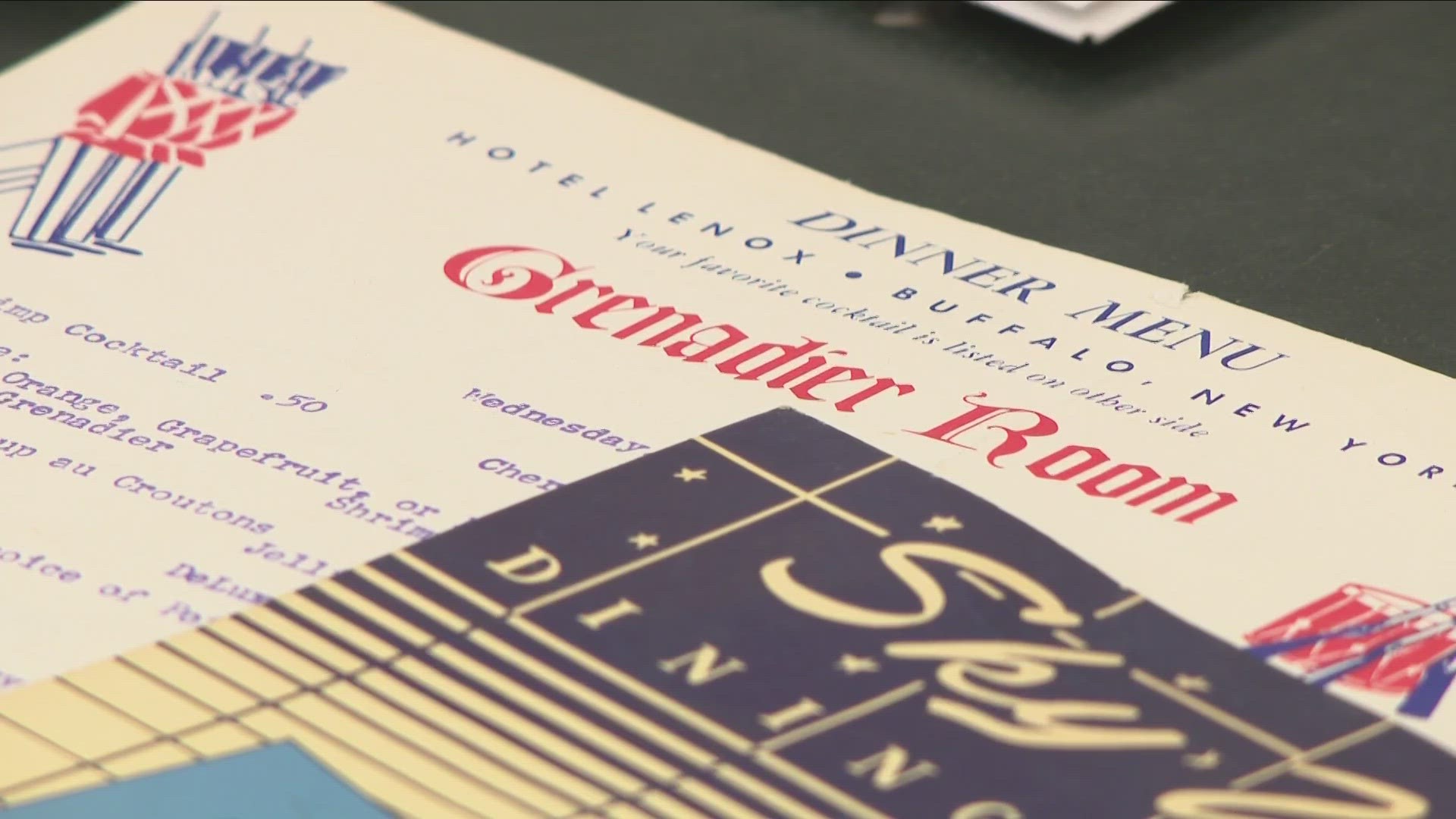BUFFALO, N.Y. — In the vast archives of The Buffalo History Museum is a collection that might surprise you. It is a collection, says Research Librarian Cynthia Van Ness, that reveals a lot about our past. "They show immigrant groups arriving and starting businesses. They show tastes changing, they show graphic design changing."
So what is this treasure trove of demographic diamonds? Menus. More than 800 menus dating back to the 1850's. Van Ness has been pouring over them for years, tracking everything from trends in eating, the socio-economic rise of our city, and the ethnic migrations of immigrant groups. She says it is amazing the timeline that can be drawn between the appetizers and desserts. "An ethnic neighborhood I wish I had a menu for and we don't is the short-lived Chinatown on Michigan Street. It's sort of in the vacinity of the Little Harlem Hotel and the Michigan Street Baptist Church." But if you open up the Little Harlem menu, which is in their collection, you will find a Chinese section.
There are dozens of menus that harken back to history, like the underground railroad connection to the Cateract House Restaurant in Niagara Falls. You can also see the rise of Buffalo to it's heyday as the 8th largest city in North America in the days leading up to the 1901 Pan Am Expo. You see that through the number of hotels that popped up and yes, the menus they put out. "We have hotel menus because often in the 19th century if you wanted fine dining you went to a hotel, that's where you went for fine dining." For example, one menu dating back to 1857 from The Hotel Clarendon holds a surprise. You'll notice, lamb chops, lobster but also an appearance by a future Queen City staple. "It's the first menu where you have chicken wings served in Buffalo. They're fried, they discribe them as fried, but they were chicken wings on a Buffalo menu in the 1850's."
However, the culinary contributions go beyond tracking the past, they also tell us a bit about where we are today. One example is the menu for Crave King in Lackawanna, reflecting the city's Yemeni population. And then there are menus that tell an entirely different story says Van Ness. "I am particularly touched, so touched by the room service menu from Roswell Park Cancer Institute. That just gets me." Because it tells a story of food service, but also of compassion.
Yes, you can tell a lot from a menu, because, Van Ness points out, it is one of few things in this world to which we can all relate. "Food is universal. A lot of us like professional sports, but not everyone. A lot of us had relatives who worked in steel mills, but not everyone. But everyone eats and I think everybody loves to eat out."

